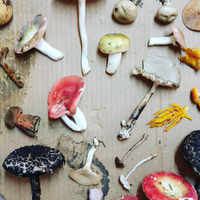The Creative Museum: Toolkit Published
 Implemented between 2014 and 2017, The Creative Museum project has aimed to help museums open to meet people, to speak with each other and become inspired by the collections in an innovative way.
Implemented between 2014 and 2017, The Creative Museum project has aimed to help museums open to meet people, to speak with each other and become inspired by the collections in an innovative way.
The three years of partnership and collective learning have led to the elaboration of a Toolkit, which has recently been published. Along the project's iterative process, from the Analysis of Best Practices, the Recommendations to the Toolkit, partners focused their thinking on three key areas, which are now reflected in this final publication:
- ‘Connecting to Communities’, which means above all to cooperate. This, for museums, is a means of opening up; of developing new audiences; of generating other types of relationships with its audiences; of exploring other ideas and taking advantage of new perspectives. To cooperate is to become a museum platform, which, by definition, brings together different individuals joined by their shared interests and their functions.
- ‘Spaces for yes’: When re-considering the role of a museum in the larger creative economy, it is important to look for opportunities to demonstrate new values in a way that allows risk-taking and respects the institutional priorities and mission. This results in the creation of ‘adjacent museum contexts’; often called ‘labs’, ‘incubators’ or ‘makerspaces’, those are parts of the museum where the expectations are different, the consequences of failure are minimised or reversed, and decisions can be made quickly. In these ‘Spaces for Yes’ museums say ‘yes’ to new ideas, ‘yes’ to new relationships, and ‘yes’ to innovation for the group.
- ‘Strategies for Success’: Museums often look to re-invent their organisations by implementing more innovative methodologies and practices. New trends encourage museums to mix top-down political approaches with bottom-up citizen initiatives that lead to question and re-think their relationship to artists, to researchers, communities and audiences.
The Creative Museum Toolkit is the result of The Creative Museum project and presents a collection of innovative and creative museum practices which add value in the three key areas. These now form the basis of three separate mini toolkits which can be used together or separately depending on personal preference. Each mini toolkit has its own introduction but each is structured in the same way. The tools are broken into three areas: individual, team and institutional. Tools are achievable and scalable depending on where readers are in their creative thinking process and how open their organisation is to introducing creative practices.
The Toolkit aims to be an inspiration for all museum professionals to be curious and implement creative and innovative practices in their institutions.
The development of the Toolkit has been co-created and co-produced by partners and expert advisors of The Creative Museum project. Each participant in the project has contributed their own valuable practices to the three core themes and provided instructions how to best implement them. The content of this publication has been developed as a direct result of team work and collective production both virtually and in-person at our partner meetings. Partners of The Creative Museum, based in several European countries, include the Chester Beatty Library, Dublin, an ASEMUS member.
For additional information and access to the Toolkit, please visit http://creative-museum.net/c/toolkit/Similar content
05 Aug 2019 - 17 Aug 2019
posted on
26 Dec 2016
from - to
29 Jun 2021 - 29 Jun 2021


